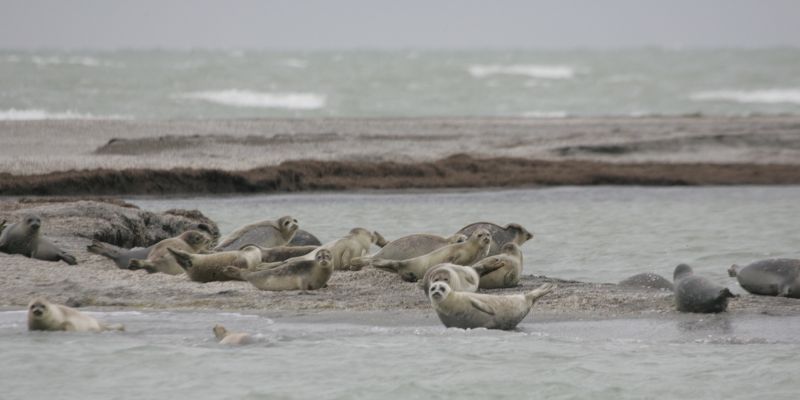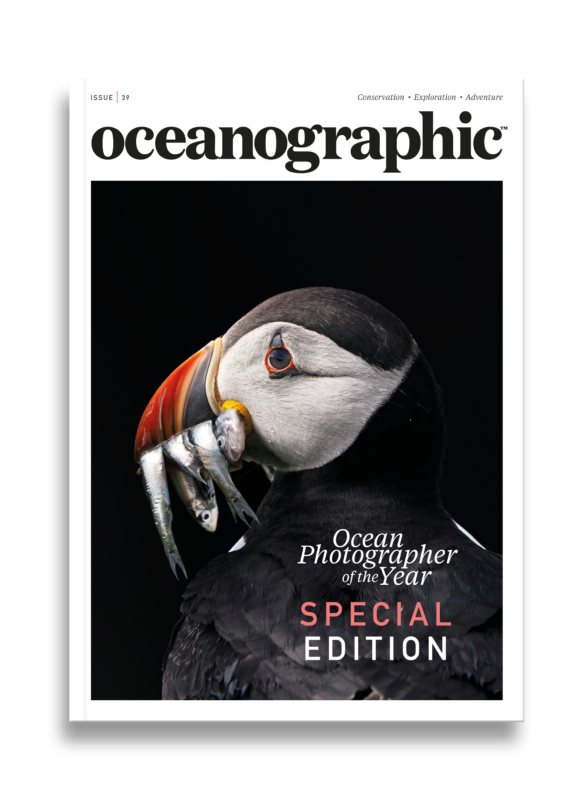Caspian Sea's rapid decline signals crisis mode for its native seals
With more water evaporating than is flowing into this unique environment, research mapped by scientists at the University of Leeds suggests that even with global warming limited to below 2°C, it’s likely the level of the Caspian Sea will decline by ten metres by 2100.
Scientists are raising the alarm bell for a population of seals alongside hundreds of fish species and invertebrates all native to the Caspian Sea, the world’s largest landlocked body of water that has found water levels receding as a result of rising temperatures and climate change.
With more water evaporating than is flowing into this unique environment, new research mapped by scientists at the University of Leeds suggests that even with global warming limited to below 2°C, it’s likely the level of the Caspian Sea will decline by five to ten metres by 2100.
Should temperatures continue to rise, however, those water levels could drop by as much as 21 metres within the next 70 years.
In either scenario, it’s an eventuality that spells certain crises for the region’s unique biodiversity, including its native Caspian seal, as well as the human infrastructure making up the sea’s many coastal communities.
Published this week in the scientific journal Communications Earth & Environment, the findings show that an area of 112,000-square-kilometres (which is larger than the size of Iceland) – is likely to dry up, even in the most optimistic scenario for global warming with a 10 metre decline.
Since many of the most ecologically and economically important areas are located in shallow water, this could have significant consequences for biodiversity and the sustainability of the region’s human population.
More than 15 million people live around the Caspian coast, in Azerbaijan, Iran, Kazakhstan, Russia, and Turkmenistan. The bordering nations rely on the body of water for fishing, shipping, and trade while the sea is important for regulating climate in Central Asia.
It’s also home to the endangered Caspian seal and six species of sturgeon, as well as hundreds of species of fish and invertebrates found nowhere else on earth. According to the research, the declining water levels will leave Caspian seals with significantly reduced breeding habitat, restrict access to spawning rivers for sturgeons, and lead to the loss of coastal lagoons and reed beds important for the spawning of other fish species and migrating birds.
What’s more, in the northern Caspian, the findings show that some settlements, ports, and industrial facilities could end up being stranded tens or even hundreds of kilometres from new shorelines. The exposed dry seabed is likely to release dust containing industrial contaminants and salt, posing serious threats to human health – similar to what occurred with the drying of the Aral Sea.

“Some Caspian Sea level decline appears unavoidable, even with action to reduce global greenhouse gas emissions,” said Dr Simon Goodman from the School of Biology at the University of Leeds, who supervised the research.
“However, with the anticipated effects unfolding over a few decades, it should be possible to find ways to protect biodiversity while safeguarding human interests and wellbeing.
“That might sound like a long timescale, but given the immense political, legislative, and logistical challenges involved, it is advisable to start action as soon as possible to give the best chance of success.”
Currently, the Caspian Sea covers an area of 387,000-square-kilometres. Even with a 10-metre decline, four out of the ten ecosystem types unique to the region would be expected to disappear completely while the coverage of existing marine protected zones would be reduced by up to 94%.
Among those most at risk is the Caspian seal, a species listed as Endangered by the International Union for the Conservation of Nature back in 2008. Caspian seals give birth to their white-coated pups between mid-January and early March on ice in the northern Caspian Sea. Research indicates that a five-metre decline could reduce the area of this habitat by up to 81% – putting huge stressors on an already reduced population.
Sturgeons, meanwhile, are an ancient family of large fish and one that is critically endangered due to overfishing for their meat and caviar. This species usually inhabits shallower parts of the sea in summer and autumn – areas that are now facing a potential reduction of somewhere between 25 and 45% This could stop the fish from accessing their few remaining spawning sites in the rivers that flow into the sea.
Biodiversity in the Caspian Sea is already threatened by overfishing, the introduction of invasive species, and pollution. Although work has been done to protect areas important for biodiversity, the research paper predicts that overall coverage of existing Caspian marine protected areas could disappear almost entirely for all countries except Kazakhstan, which would retain about 5% of current coverage.
“We hope this research will help to raise awareness of the trajectory and potential impacts of the falling sea level,” said Rebecca Court, PhD researcher in the School of Earth and Environment at Leeds who worked on the research paper as part of her Masters degree with the university’s School of Biology.
“The mapping should better equip policymakers and conservationists to plan for and address the numerous issues in advance.”
Looking to the future, the researchers behind the paper have drawn up a list of recommended steps to take to mitigate the worst of the impacts. The list includes investing to enhance regional capacity for biodiversity conservation; supporting coastal communities to diversify economically; develop protected areas with flexible borders; track the rapidly changing ecosystem and implement species translocations and ecosystem restoration where needed; and reduce greenhouse gas emissions at a global scale.
It is stressed that “urgent action is needed”, with coordinated regional planning and global collaboration to mitigate the projected impacts.
Dr Elchin Mamedov from the Ministry of Ecology and Natural Resources, Azerbaijan, said: “This is an important study because it highlights the risks posed by climate change for Caspian region biodiversity and local communities and the need to enhance regional and international cooperation to help manage the impacts.”


"*" indicates required fields
Printed editions
Current issue
Back issues

Current Issue
Issue 41 Holdfast to the canopy

Back Issues
Issue 39 Special Edition: OPY2024
Enjoy so much more from Oceanographic Magazine by becoming a subscriber.
A range of subscription options are available.








